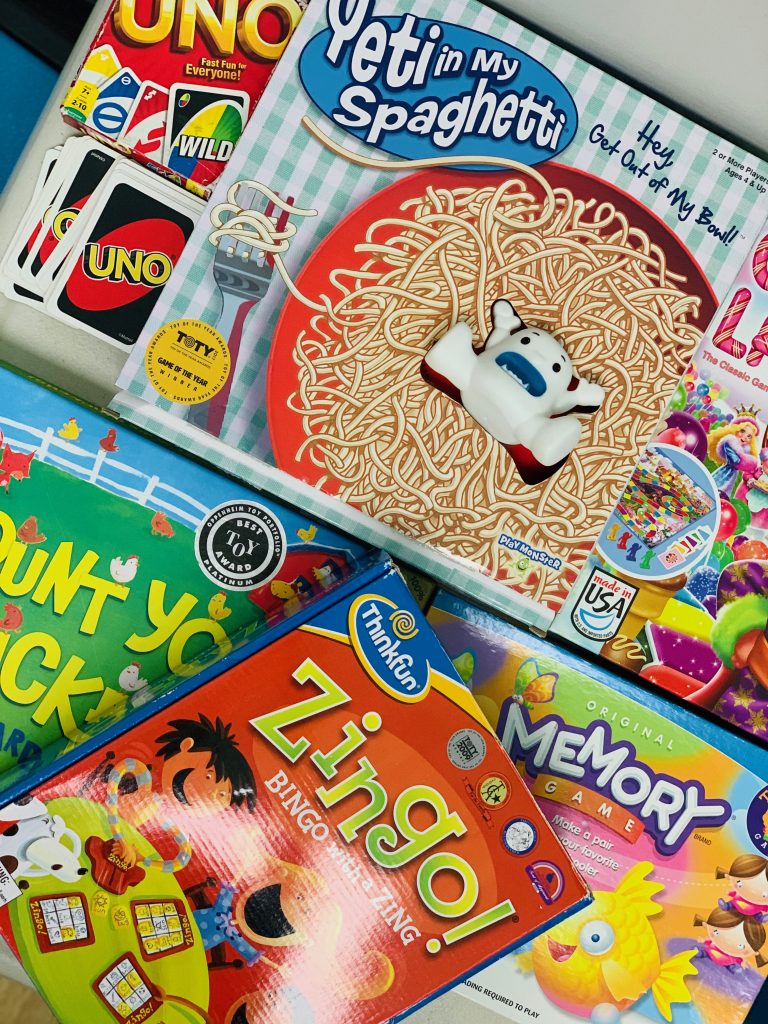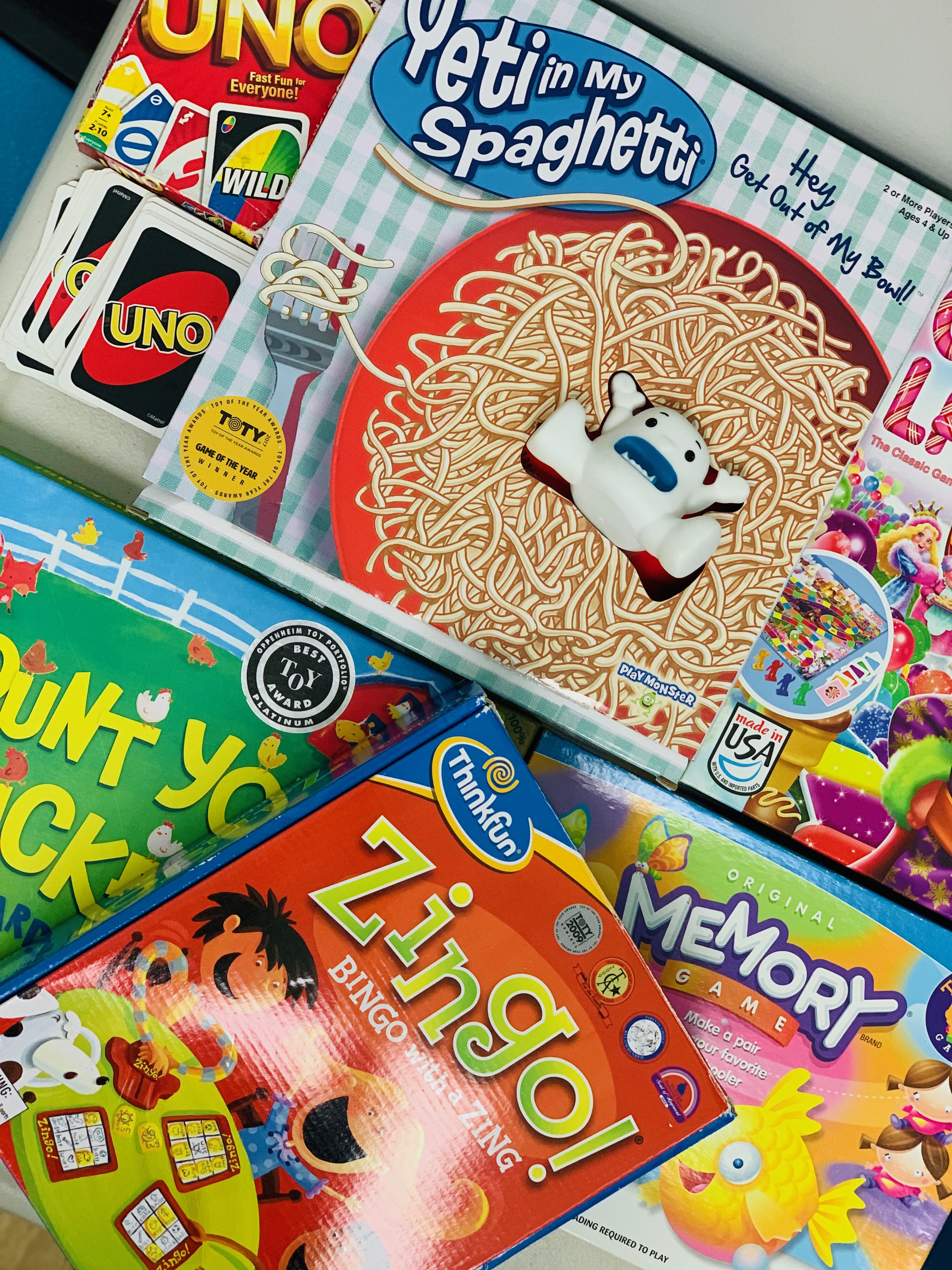
Who doesn’t love playing games?! Games allow kids to have fun while learning and targeting specific speech and language skills. Speech-Language Pathologists are known for their wide library of games, most of which are childhood favorites for parents. While it is necessary to make sure the game is age appropriate, most games can be used and/or modified to meet the needs of most children.
- Using games to make a requests:
Whether your little one is a talker or not, requests can be made in multiple ways. Start by organizing the environment so you have control of the game pieces. In this way, you, as the facilitator can provide pieces/turns to the child when a request is made. If your child is not a talker, and can sign a request, provide them an appropriate cue, “more turn?” and wait for the child to sign in response. If you’re child is a talker, requests/statements can be made throughout the game (“I need the dice [to roll].” Or, “Can I be the blue game piece?” or, “It’s your turn.”).
- Using games to promote Yes or No responses:
Understanding language is a big part of communication that we cannot ignore. Allowing children the opportunity to practice responding to yes/no questions is a way for us to confirm that the child understands what we’re asking as well as understands how we’re going to use the toy/tool. So, asking your child, “Do you want this game?” gives them a chance to respond in a way that let’s you (as the parent) know whether or not this is something they want. If a child responds with, ‘yes’, you can further use yes/no questions to encourage further understanding.
For example, if the game has dice and game pieces, you can ask them:
- Do you want the yellow or the blue piece?
While holding up the pieces, have the child point/express which piece they would like. Depending on which piece they choose, you can work in ‘yes’ and ‘no’ responses to confirm they have knowledge of the object/animal they’ve chosen. So, if they choose the yellow piece, hold up the blue piece and ask:
- Is this the yellow piece?
In this way you can confirm whether or not the child has knowledge of the color. If they child says, ‘no’, validate their response [good job] and give them the piece they requested. In the same way, you can ask for yes and no responses in regard to the rules of the game. For example, you can ask
Play with functional ‘yes’ or ‘no’ responses once they get the puzzle piece they want.
Ask:
- Should I put the game piece behind my back?
- Should I put the game piece on my head?
- Should I put the game piece on my nose?
- Should I give the game piece to you?
Appropriate responses gives you insight as to whether or not your child has a basic understanding of how to use the materials appropriately. If they answer incorrectly, it gives you a chance to teach them the appropriate response.
- Using games to practice a target sound:
If a child has a specific sound they are working to produce, games can be a great way to help target and practice this skill. In between turns, determine a number of sounds/words/sentences that the child must practice before earning their next turn in playing the game. For example, if a child is working on producing the /th/ phoneme sound at the word level, have them repeat 5 words before they are allowed to take their turn in the game. With a well established drill pace, children get to play a game while effectively targeting speech sounds.
- Using puzzles to practice simple ‘wh’ questions:
Asking ‘wh’ questions is a great one-on-one or group activity that can be facilitated with the use of games. For example, when starting the game, you can ask the child/ren, “where should I put my piece to start?” or “what do I do with the dice?” or “how should we decide who is going first?” or “when will I be able to take my turn?” If a game has multiple pieces like cards to pick or icons on the game board (like in Candy Land), you could ask, “how would I know when I needed to pick a card?” or “what if I landed on the X”? In this way, we can organically ask questions that not only target comprehension skills but also allow us to know whether or not a child understands the rules of the game being played.
Using language in a play-based setting helps to facilitate language in a natural way allowing children the opportunity to use language instinctively.
Check out some of our favorite games to play with kids!
- Connect four
- Guess who
- Candy land
- Pop the pig
- Memory
- Yeti in my spaghetti
- Uno
- Don’t break the ice
- Headbandz
- Go-Fish
….and so many more!
